The Architects Who Asked, ‘What If?’
When architects design their own homes, you would think they have free rein to do as they wish. And in many ways they do, creating homes that suit their taste and use of space. On the other hand, many architects designing their homes choose to place constraints on themselves, such as limiting their choice of materials, adhering to sustainability principles, exploring site-specific solutions and rethinking their design intentions. Ultimately, these self-imposed restrictions can give them the opportunity to experiment with principles of design and sustainability, to push their own boundaries, to test their creative and technical ideas, and to ask, “What if?”
Architect Feras Gabriel Raffoul says planning and designing his own house gave him the chance to “implement ideas creatively and experimentally without the risk of placing liability on others.” In this situation, the house becomes a prototype for exploring and executing ideas, which gives future clients the evidence and confidence to see that the architect’s ideas can work.
These four Australian architects flexed their creative muscles to build their dream houses, and they offer advice for those considering similar projects.
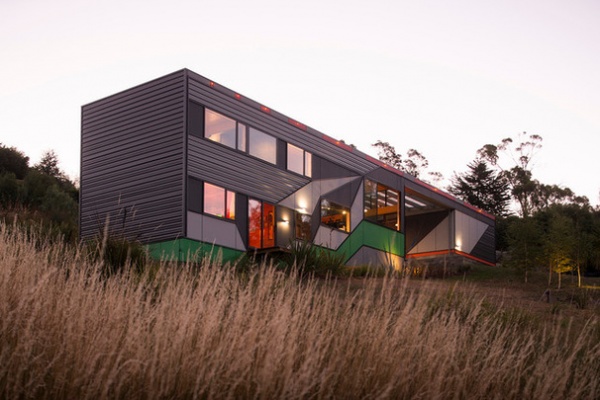
Working With Site Constraints
Project: Southern Outlet House
Architect: Philip M Dingemanse of PMD Architects
Tasmania-based architect Philip M Dingemanse’s home sits on what he describes as a “cheap, leftover piece of land deemed too difficult to deal with.” This constraint became a key driver of the project, spurring Dingemanse to design his home as both a site-specific exploration and an investigation into how residential architecture can contribute to the public domain.
The location, a northeast-facing slope next to a major arterial road, was one of the drawbacks the architect faced in designing the house. Starting from the highest point of the landscape, Dingemanse stretched the building out across the site until he hit a boundary. Then he moved what would have been the end of the building and placed it underneath, ultimately creating an elongated rectangular box that is limited in floor plan but vast in volume.
Dingemanse designed the exterior with his neighbors and passing motorists in mind. Employing the “dazzle technique,” a strategy from early 20th-century naval camouflage, he confidently used bold color and abstract shapes across the otherwise dark facade to manipulate perspective and suggest a third dimension. He also incorporated truck navigation lights at ever-diminishing increments along the upper edge of the building to foster a sense of movement.
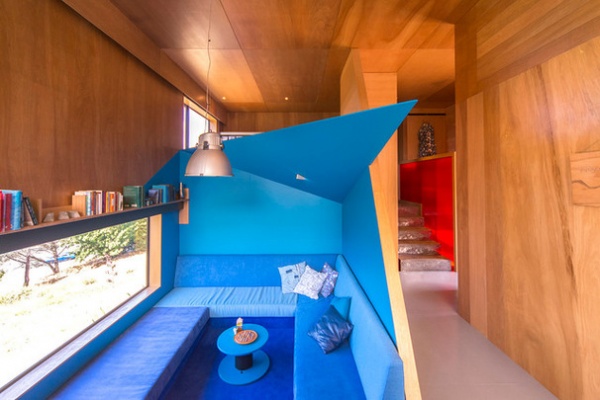
Inside, the house is a welcoming family home, with large windows to enhance the indoor-outdoor relationship that underlies the design of the house.
Dingemanse set himself additional limits inside the home, asking, “What if the house had no white walls?” in order to explore another trajectory of thinking. Wood panels line the living spaces to create a feeling of warmth. A red-walled, almost transparent stairwell forms the heart of the house, and a vibrant blue sunken lounge room has projecting overhangs to create stunning visual interest.
Sustainability proved to be an essential principle for Southern Outlet House. Dingemanse used Forest Stewardship Council-certified plywood, insulated the house beyond minimum building code requirements, and incorporated materials and technology that contributed to a well-performing building.
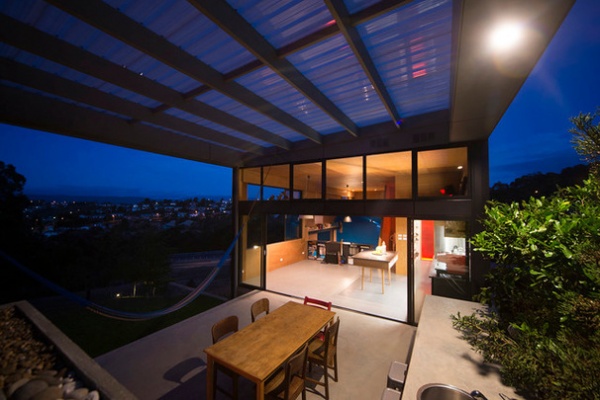
Architect’s advice: Dingemanse says that working with site constraints requires a considered effort from the outset: “It is essential to work with correct and accurate site information and to engage a reputable architectural specialist.” From the experience of designing and living in his own house, Dingemanse also advises that big is not better, and that a limited area or floor plan can be made up for in volume and height, especially on a steep site.
See more of this house
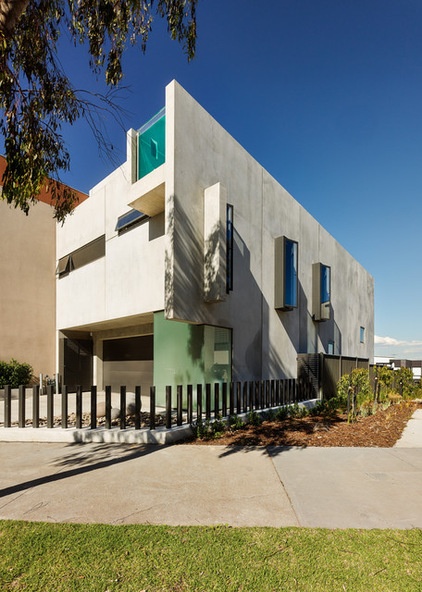
Exploring a Minimal Material Palette
Project: Concrete House
Architect: Feras Gabriel Raffoul of FGR Architects
In Melbourne’s Maribyrnong suburb, Feras Gabriel Raffoul’s spectacular three-story home is a study in how to experiment technically with a minimal palette. Ninety percent of the house is concrete and glass, materials that were chosen with longevity and sustainability in mind. Raffoul also considered how the concrete and glass would simplify the build and integrate the new house with the existing environment. Durable concrete also is a low-maintenance material adaptive to the climate and has great thermal benefits, especially when paired with good-quality glass.
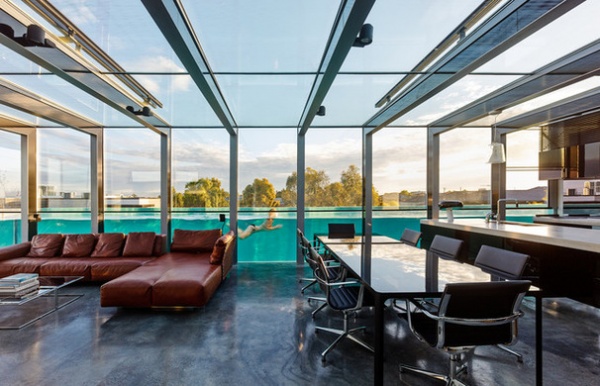
Raffoul eliminated paint, plaster, tiles, floorboards, carpet, baseboards, door frames and wood doors. Instead he used commercial construction for concrete floors and ceilings and in-filled glass panels, glass doors and double-paned windows. Despite the lack of superfluous design detail, Concrete House is full of soul.
Raffoul designed Concrete House upside down, with the bedrooms and service spaces on the lower floors and the spacious and bright living area on the top floor. With a retractable glass roof, the movement of light warms the concrete and brings the architecture to life. But the truly showstopping feature is a glass-fronted, fishbowl-like swimming pool adjacent to the living area.
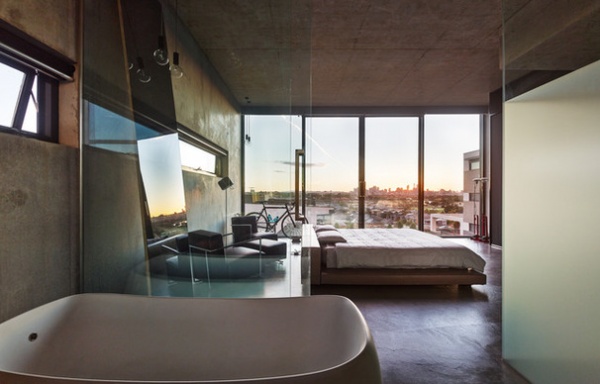
Architect’s advice: One great benefit of working with a small material palette, Raffoul says, is that it minimizes the number of contractors involved in the build. This facilitates coordination and mitigates the number of potential issues. However, he adds, working with a minimal palette requires more detail and assertive decision-making early on. Homeowners must be confident and comfortable with their decisions as they will be, so to speak, set in concrete.
For Raffoul, the process of designing and building his own house — from conception to habitation — enhanced his understanding of “how to live in a home.” It was a process that required patience as well as an understanding of how a building adapts and settles over time and how it is affected by the seasons.
See more of this house
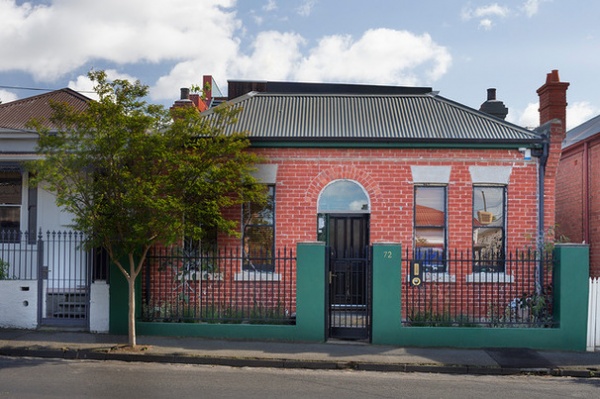
Maximizing the Health Benefits of a House
Project: Argyle
Architect: David Saunders of S2 Design
Architect David Saunders renovated a protected historic Victorian terrace house in St. Kilda for his young family to live in. Argyle is Saunders’ exploration of how contemporary architecture, passive design principles and self-sufficiency can be incorporated into a house without diminishing the origins and integrity of the existing building.
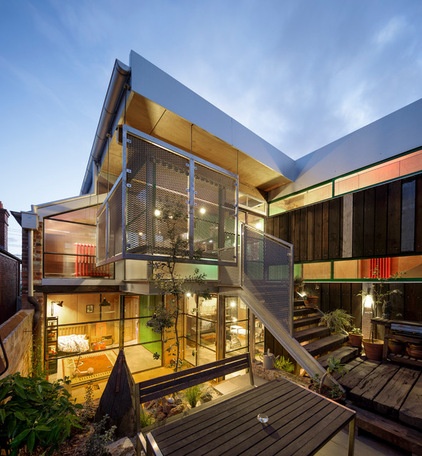
Saunders believes the houses we live in should not only be more ecologically sound environments, but happier, healthier and more beautiful ones too. Accordingly, he designed his new home to provide his family with the best health benefits a building can offer.
Some of those include fresh air, balanced humidity, homegrown food and plenty of sunshine. Saunders selected materials that were recycled; salvaged from the original dwelling; or recyclable, farm-grown and nontoxic. In addition, Argyle has a working roof farm and the ability to function almost totally off the grid.
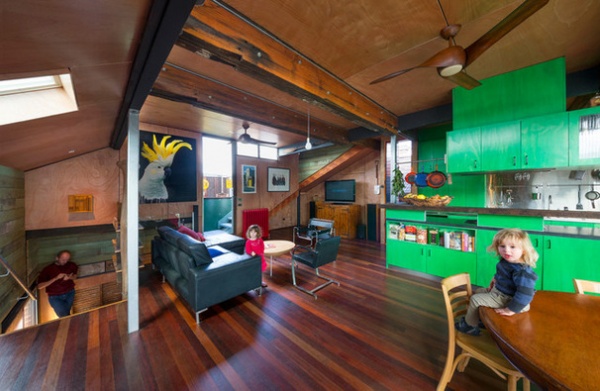
Architect’s advice: Saunders says his successful results have given him the confidence to follow through with new concepts. He avoided common building materials that are known to expose people to carcinogenic volatile organic compounds, or VOCs, and he advises homeowners and homebuilders — particularly parents of young children — to do the same for the sake of their health.
See more of this house
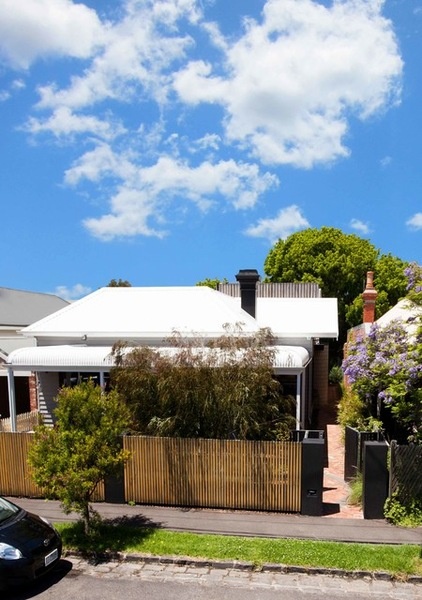
Integrating an Existing House
Project: Balaclava House
Architect: Bill McCorkell of ArchiBlox
Bill McCorkell renovated his Victorian clapboard house as a home for his young family. As co-owner and architectural director of ArchiBlox, he is an expert in creating sustainable prefabricated houses and extensions using a flexible, modular building system.
Balaclava House proved to be an opportunity for McCorkell to explore the integration of an existing house with both site-built and prefabricated additions. The challenge lay in combining these elements so that the rooms and internal and external spaces flowed seamlessly into one another.
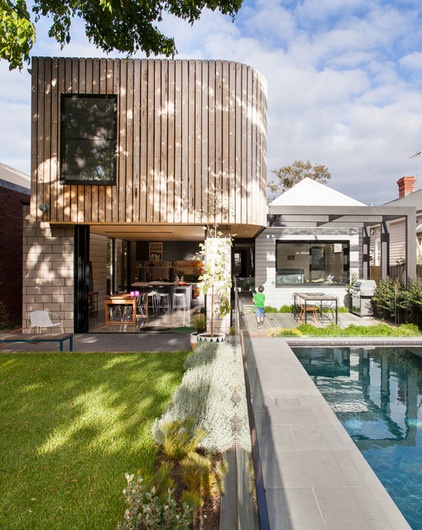
McCorkell installed a modern two-level addition on the existing house using a modular system. Then he surrounded it with an upper-level facade in native hardwood with a striking organic curve to lessen the impact of a harsh geometric shape on the backyard.
Inside, glass doors, large windows and views to the garden foster the seamless integration of the three elements and fill the interior with natural light, ventilation and a sense of spaciousness.
Sustainability remained at the fore of McCorkell’s renovation design, proving that sustainable building methods need not sacrifice aesthetics. He used renewable materials, polished concrete floors for efficient heating and cooling, and a floor plan that maximized natural ventilation.
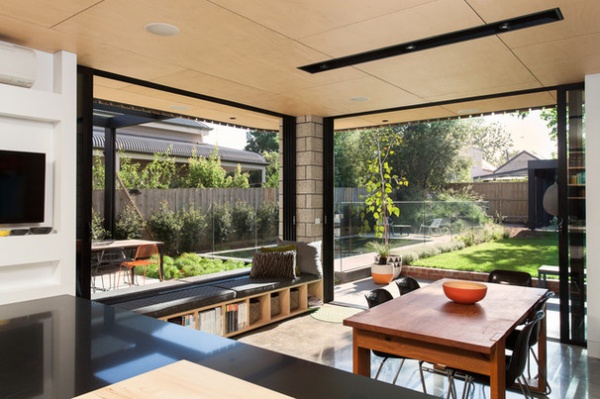
Architect’s advice: McCorkell says that anyone undertaking a similar project should look at it holistically to maximize the passive design opportunities of the site. He also encourages homebuilders to consider prefab materials to provide a beautiful, sustainable solution for excellent value.
See more of this house
Tell us: Have you tested your creative boundaries while designing your new home? Share your stories in the Comments.
More:
8 Things Successful Architects and Designers Do
Design Workshop: The Beauty of Humble Materials












